The dance of textured hair with the air around it is a subtle yet powerful exchange, shaping its very being and moisture balance. This dialogue, often unseen, dictates much about how our strands feel, behave, and hold onto their precious hydration. It is a relationship rooted in the hair’s unique architecture and the atmospheric elements that surround us daily.
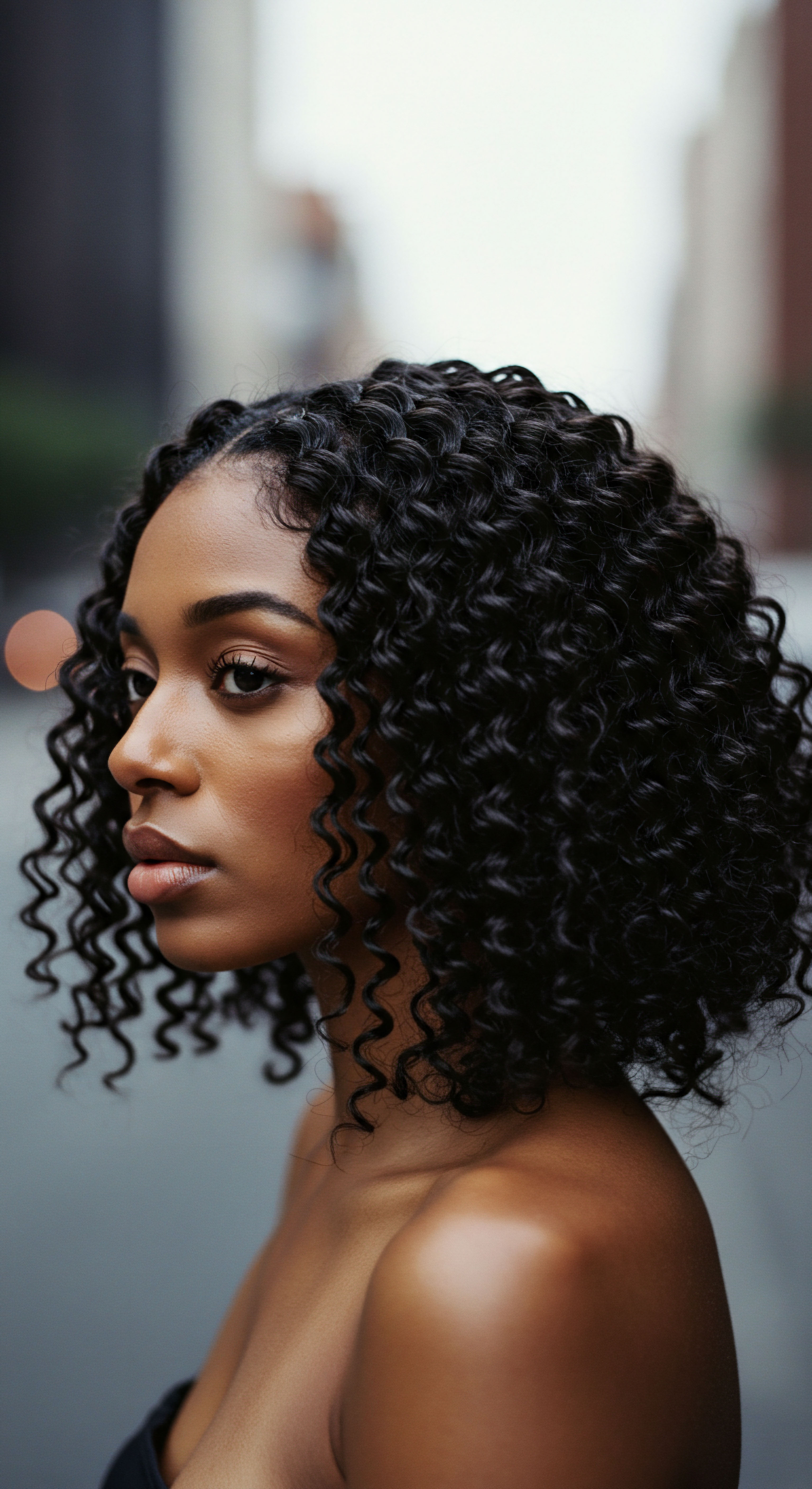
Roots
Consider, for a moment, the quiet journey of a single strand of textured hair. It emerges from its follicle, a living testament to ancestry and biological design, into a world filled with invisible forces. Among these forces are air particles, those microscopic components of our atmosphere that drift, settle, and interact with everything they encounter, including our hair.
Understanding this interaction begins at the very foundation of hair science, delving into the unique structure of textured strands and how these elements conspire to influence their moisture. It is a foundational understanding, much like tracing the roots of a majestic tree, that allows us to comprehend the delicate balance of hydration.

Hair Anatomy and the Air’s Embrace
The structure of textured hair is a marvel of biological engineering, differing significantly from straighter hair types. At its core, each strand is composed of three primary layers ❉ the medulla, cortex, and cuticle. The Cuticle, the outermost layer, consists of overlapping, scale-like cells that serve as the hair’s primary shield against external aggressors and regulate moisture exchange.
In textured hair, these cuticle scales tend to be more lifted or open, particularly at the curves and bends of the strand, compared to straight hair. This inherent characteristic, while contributing to the hair’s volume and distinctive appearance, also means that textured hair can be more susceptible to moisture loss and gain from its environment.
Air particles, often referred to as Particulate Matter (PM), comprise a heterogeneous blend of solid particles and liquid droplets suspended in the atmosphere. These range in size from coarse particles (PM10, with diameters up to 10 micrometers) to fine particles (PM2.5, with diameters up to 2.5 micrometers) and even ultrafine nanoparticles. These tiny invaders are not inert; they carry various chemical compounds, including polycyclic aromatic hydrocarbons (PAHs), heavy metals, and volatile organic compounds. When these particles come into contact with hair, they do not merely rest on the surface; they can adhere, penetrate, and instigate chemical reactions.
The unique, often lifted cuticle structure of textured hair creates a more open pathway for air particles to interact with and influence the strand’s delicate moisture balance.

The Elemental Lexicon of Hair Hydration
To speak of hair moisture is to speak of its water content, a property overwhelmingly dependent on the relative humidity of the surrounding air. Hair is hygroscopic, meaning it readily absorbs and releases water vapor. This dynamic interplay directly influences the hair’s physical properties, including its softness, elasticity, and susceptibility to breakage.
When the air is dry, hair releases moisture, becoming brittle and prone to damage. Conversely, in humid conditions, hair absorbs water, which can lead to swelling, frizz, and a change in curl pattern.
The surface of a healthy hair strand is coated with a lipid layer, notably 18-Methyleicosanoic Acid (18-MEA), which provides a hydrophobic barrier, helping to repel water and maintain internal hydration. Environmental pollutants, however, can degrade this protective layer, making the hair more hydrophilic—meaning it more readily attracts and absorbs water. This shift in surface chemistry is a silent but significant contributor to moisture imbalance in textured hair.
- Cuticle Integrity ❉ The outermost layer of hair, like shingles on a roof, protects the inner cortex. When lifted or damaged, it allows moisture to escape or enter too rapidly.
- Hair Porosity ❉ This refers to the hair’s ability to absorb and hold moisture. Textured hair often exhibits higher porosity due to its open cuticle, making it more responsive to atmospheric changes.
- Oxidative Stress ❉ Air pollutants generate reactive oxygen species (ROS) that can damage hair proteins and lipids, leading to a compromised moisture barrier.

The Invisible Assault on Hair Structure
The consequences of air particles on textured hair moisture extend beyond simple dryness or frizz. Particulate matter, particularly the smaller PM2.5 particles, can infiltrate the hair follicle and scalp, causing irritation and inflammation. This scalp distress can disrupt the hair’s natural growth cycle and compromise the health of newly emerging strands, which may already possess a weakened ability to retain moisture.
Studies suggest that air pollutants can reduce levels of essential proteins responsible for hair growth, such as beta-catenin, cyclin D1, cyclin E, and CDK2. This indicates a deeper, more systemic impact on hair vitality, which in turn influences its capacity to maintain hydration.
The degradation of hair proteins, especially keratin, due to pollutants is a serious concern. When these proteins are damaged, the hair shaft becomes weaker and more susceptible to breakage, further compromising its ability to hold moisture. This degradation is often linked to oxidative stress, where free radicals from pollutants attack the hair’s structural components. The interplay between external particulate assault and internal hair protein integrity directly affects how well textured hair can resist environmental moisture fluctuations.
| Pollutant Type Particulate Matter (PM) |
| Composition Dust, soot, industrial emissions, diesel exhaust |
| Impact on Hair Moisture and Health Adheres to hair surface, penetrates follicles, damages cuticle, causes dryness, frizz, protein degradation, and scalp irritation. |
| Pollutant Type Polycyclic Aromatic Hydrocarbons (PAHs) |
| Composition Combustion products (vehicle exhaust, wood burning) |
| Impact on Hair Moisture and Health Clings to hair, causes oxidative stress, chemical damage to cuticle and proteins, increased porosity, and accelerated degradation. |
| Pollutant Type Volatile Organic Compounds (VOCs) |
| Composition Industrial solvents, household products, vehicle emissions |
| Impact on Hair Moisture and Health Can contribute to scalp irritation and may affect hair shaft integrity, potentially leading to dryness. |
| Pollutant Type Heavy Metals |
| Composition Lead, mercury, nickel, arsenic |
| Impact on Hair Moisture and Health Deposits on hair, contributes to oxidative stress, disrupts hair growth, and can cause dryness and brittleness. |
| Pollutant Type Understanding these atmospheric elements helps in developing targeted strategies for textured hair protection. |
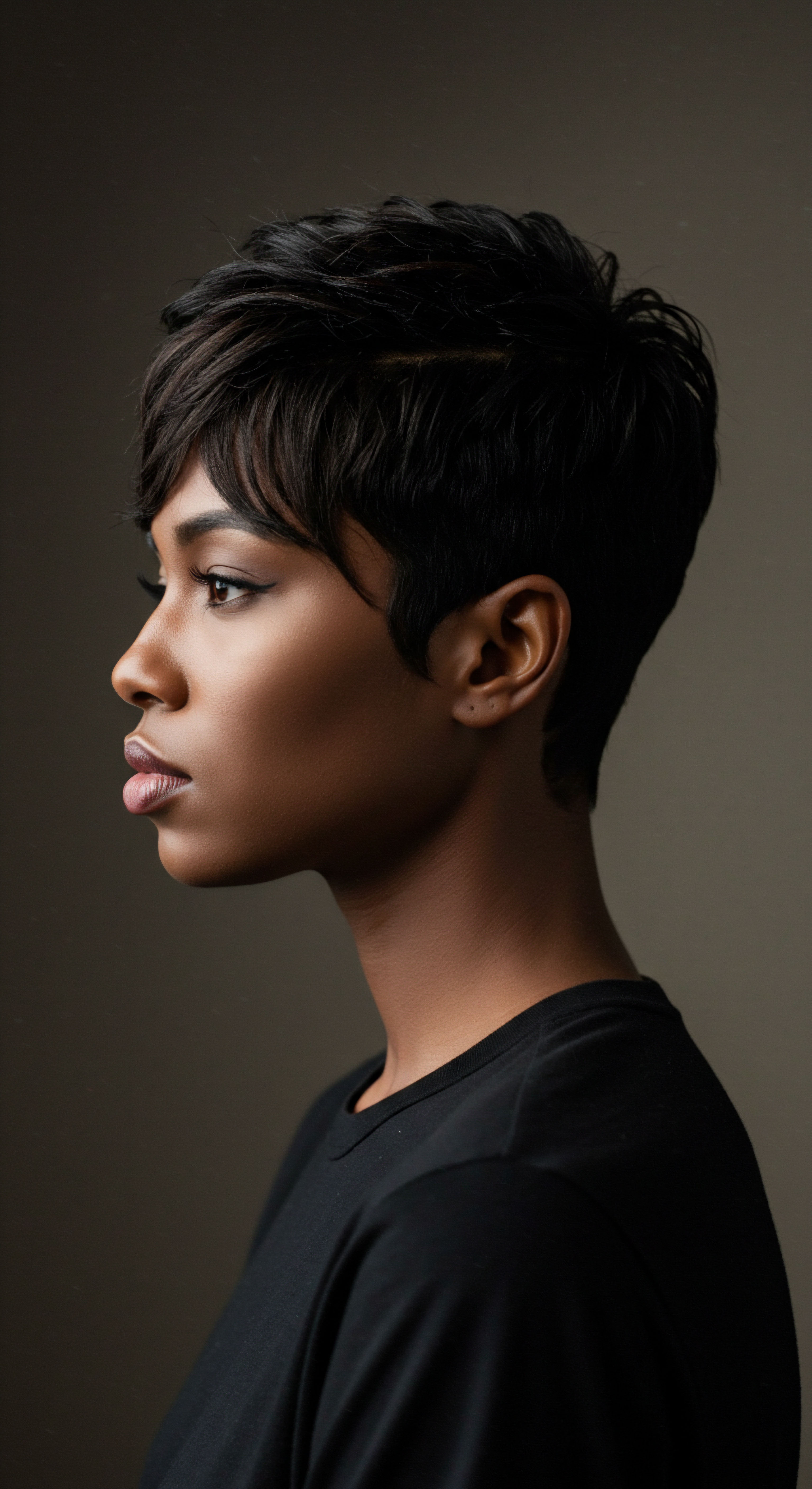
Ritual
Stepping from the foundational understanding of hair structure and atmospheric elements, we turn now to the rhythm of our daily lives—the rituals, both grand and small, that shape the interaction between our textured hair and the air around it. Our hands, our choices of products, the very ways we move through our days, all contribute to how well our strands retain their moisture amidst the challenges of environmental particles. This section explores the practical wisdom, the intentional acts of care, that can empower textured hair to thrive, even when faced with the unseen influences of the air. It is a journey into applied knowledge, where gentle guidance meets tangible solutions.

Cleansing with Purpose
The act of cleansing textured hair transcends mere washing; it becomes a deliberate ritual of purification, especially when considering the constant presence of air particles. Pollutants, including particulate matter and various chemicals, cling to the hair surface and scalp. If not removed effectively, these deposits can lead to scalp irritation, clogged follicles, and a compromised moisture barrier on the hair shaft itself. A thorough, yet gentle, cleansing routine is therefore paramount.
Choosing the correct cleansing agent is a thoughtful act. Sulfates, while effective at stripping away grime, can also strip the hair of its natural oils, leaving textured strands feeling parched and more vulnerable to moisture loss from the air. Instead, formulations with mild surfactants or co-washes can cleanse without over-drying. The frequency of washing also plays a role; over-washing can disrupt the scalp’s natural oil production and hair’s lipid layer, exacerbating dryness.
Conversely, insufficient cleansing allows pollutants to accumulate, leading to their damaging effects. Finding this delicate balance is a personal exploration, guided by individual hair needs and environmental exposure.
Intentional cleansing and conditioning rituals are the first line of defense, creating a protective shield against the drying and damaging effects of airborne elements.
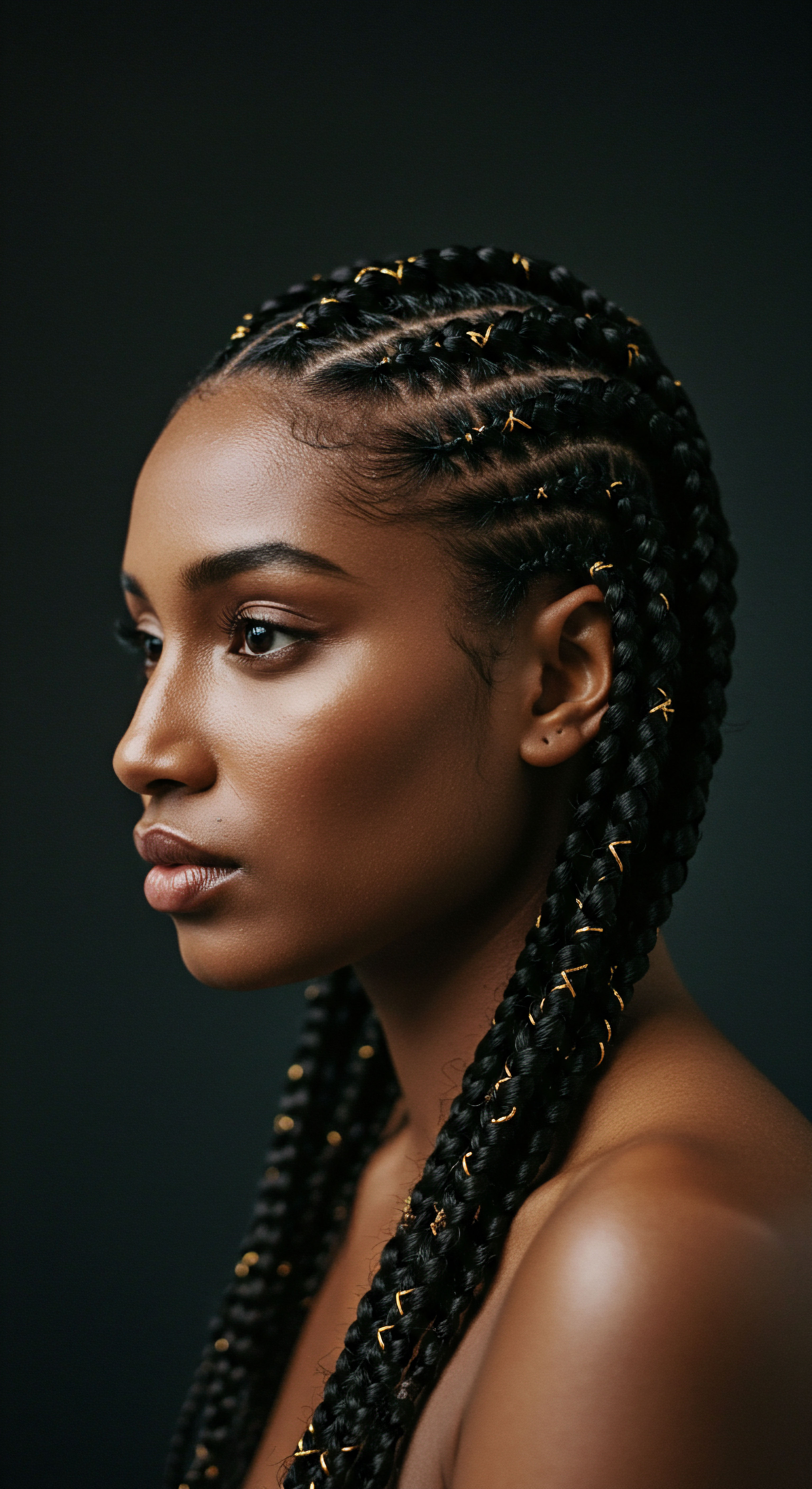
Sealing and Shielding Strands
Once cleansed, the next step in this protective ritual involves sealing moisture within the hair shaft and creating a barrier against environmental incursions. Textured hair, with its inherent tendency for lifted cuticles, requires thoughtful attention to this sealing process. Products rich in humectants, emollients, and occlusives work in concert to draw in moisture from the air (when humidity is favorable), hold it within the strand, and then lock it down.
Leave-In Conditioners and hair oils are essential components in this stage. Leave-in conditioners provide a foundational layer of hydration and help to smooth the cuticle, reducing its tendency to lift in response to humidity fluctuations. Following with a carefully selected oil or butter creates a physical barrier, effectively coating the hair shaft and reducing the direct contact between environmental particles and the hair’s delicate outer layer.
Certain oils, such as jojoba or argan, are celebrated for their ability to mimic the hair’s natural sebum, offering protection without a heavy feel. This layering approach, often referred to as the “LOC” method (Liquid, Oil, Cream), is a popular and effective strategy within textured hair communities to maximize moisture retention.
- Humectants ❉ Ingredients like glycerin or hyaluronic acid draw moisture from the air into the hair, particularly useful in moderately humid climates.
- Emollients ❉ Natural oils and butters soften and smooth the hair, helping to lay down the cuticle and reduce friction.
- Occlusives ❉ Heavier oils and butters form a protective film on the hair surface, sealing in moisture and repelling external pollutants.

Protective Styling as a Guard
Beyond products, the very way we style our hair serves as a profound protective measure against the atmospheric environment. Protective Styles, such as braids, twists, buns, and updos, minimize the hair’s direct exposure to air particles and environmental stressors. By tucking away the delicate ends and reducing the surface area of hair exposed to the elements, these styles help to preserve moisture and prevent physical damage.
Consider the impact of wind, a common carrier of dust and pollutants. A loose, flowing style offers countless opportunities for strands to tangle, abrade against each other, and absorb airborne contaminants. A well-executed protective style, conversely, creates a cohesive unit, reducing friction and limiting the direct deposition of particles onto individual hair shafts.
This strategic approach to styling is not merely about aesthetics; it is a practical, centuries-old method of safeguarding hair health. The choice of style becomes a conscious act of shielding, allowing textured hair to maintain its moisture and integrity in a world of ever-present atmospheric elements.
| Style Type Braids (Box Braids, Cornrows) |
| Mechanism of Protection Encases strands, reduces direct exposure to air, minimizes friction. |
| Benefit for Moisture Significantly lowers moisture loss from individual strands; shields from particulate matter. |
| Style Type Twists (Two-Strand, Flat Twists) |
| Mechanism of Protection Similar to braids, keeps hair bundled and contained. |
| Benefit for Moisture Helps maintain internal hydration by reducing evaporation and pollutant adherence. |
| Style Type Buns and Updos |
| Mechanism of Protection Gathers hair away from shoulders and back, reducing contact with clothing and air. |
| Benefit for Moisture Protects ends, which are most vulnerable to dryness and environmental damage. |
| Style Type Wigs and Hair Extensions |
| Mechanism of Protection Creates a complete physical barrier over natural hair. |
| Benefit for Moisture Offers comprehensive protection from all external atmospheric factors, preserving natural hair's moisture. |
| Style Type These styles offer both beauty and practical defense against environmental challenges. |
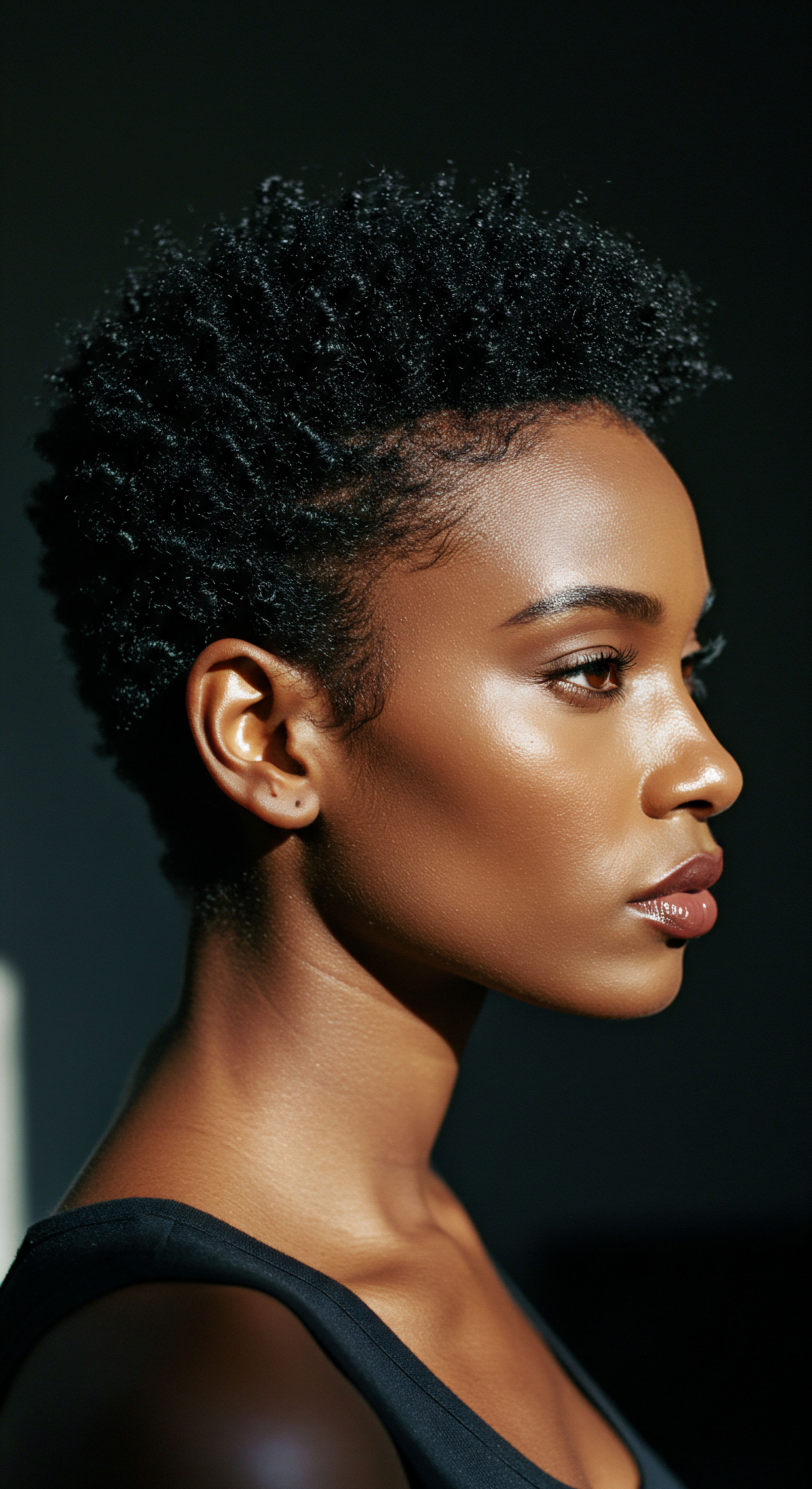
Relay
The dialogue between textured hair and air particles extends far beyond the visible, reaching into the subtle realms of molecular interaction, cultural legacy, and the very fabric of our urban environments. To truly comprehend how air particles affect textured hair moisture, we must delve into the intricate connections that bind hair biology to the atmospheric conditions, and then further, to the lived experiences and ancestral wisdom that have shaped hair care across generations. This section invites a deeper contemplation, a relay of understanding from the microscopic to the societal, offering profound insights backed by contemporary research and a respectful acknowledgement of heritage.

How Do Atmospheric Particulates Alter Hair’s Hydrophilic Nature?
The question of how air particles influence textured hair moisture finds its answer, in part, within the subtle chemical alterations occurring at the hair’s surface. Hair, particularly textured hair, possesses a natural lipid layer, including 18-methyleicosanoic acid (18-MEA), which renders its surface hydrophobic—meaning it repels water. This natural repellency is crucial for maintaining moisture within the hair shaft and preventing excessive swelling and frizz in humid conditions. However, airborne pollutants, especially particulate matter (PM) and polycyclic aromatic hydrocarbons (PAHs), are known to degrade this protective lipid layer.
When these pollutants deposit on the hair, they can initiate oxidative reactions, generating reactive oxygen species (ROS). These ROS act as molecular aggressors, breaking down the delicate 18-MEA layer and oxidizing the hair’s proteins, particularly keratin. This oxidative damage leads to a significant increase in the hair’s hydrophilicity, making it more prone to absorbing water from the atmosphere. For textured hair, already predisposed to cuticle lifting, this heightened hydrophilicity means an even more rapid and uncontrolled uptake of moisture in humid environments, resulting in exacerbated frizz and structural instability.
Conversely, in dry conditions, this damaged, more hydrophilic surface loses its internal moisture more readily, leading to increased dryness and brittleness. This subtle chemical shift at the hair’s surface is a key, often overlooked, mechanism by which air particles compromise textured hair moisture.
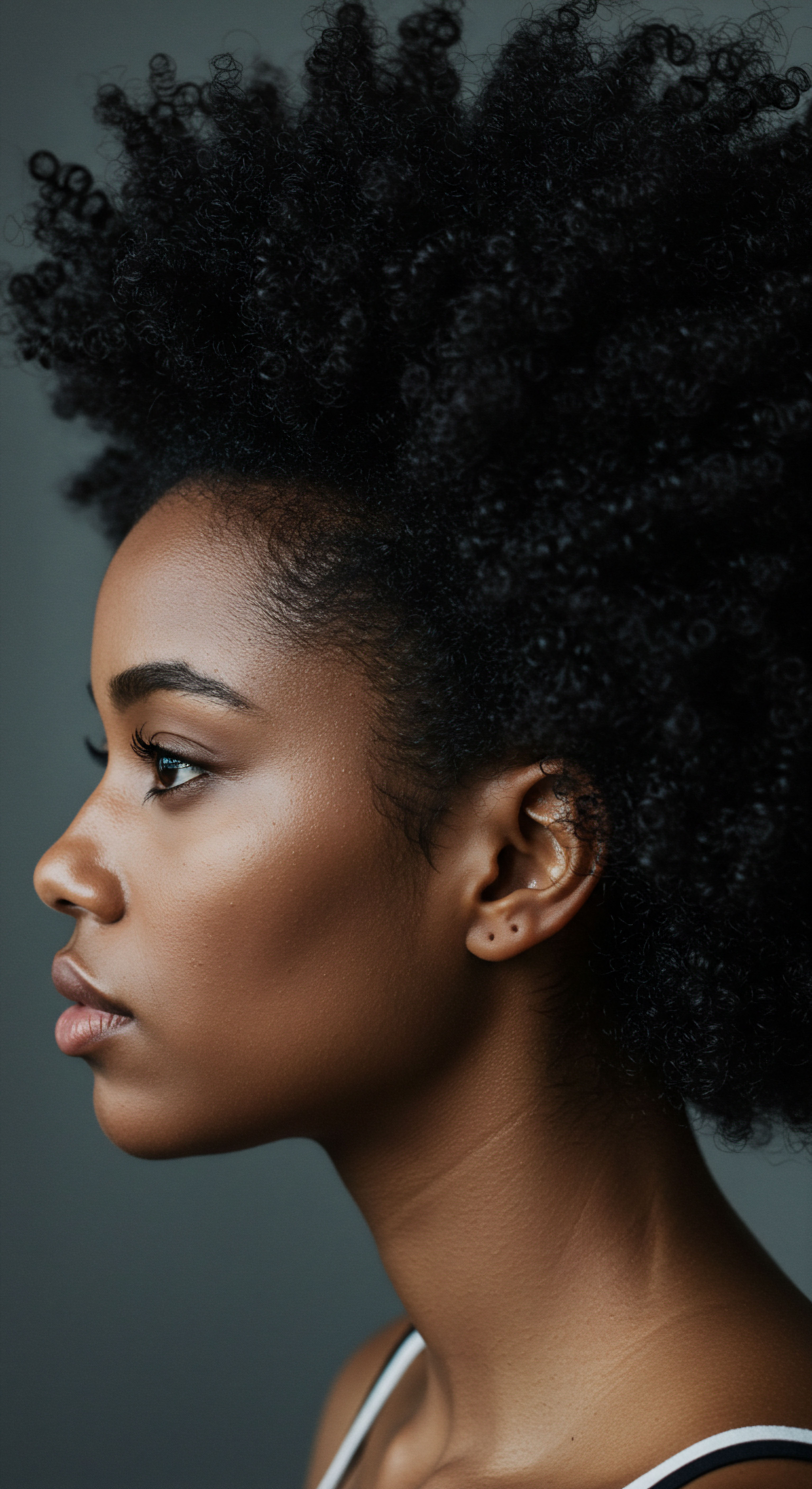
Do Localized Pollutant Concentrations Disproportionately Affect Textured Hair Moisture?
The impact of air particles on textured hair moisture is not uniform across all environments; localized pollutant concentrations can create disproportionate challenges. Urban environments, for instance, are hotbeds of particulate matter, nitrogen oxides, and volatile organic compounds from vehicle emissions and industrial activity. These concentrations vary significantly even within a single city, with areas near major roadways or industrial zones exhibiting higher levels of air pollution.
A compelling area of inquiry, though still emerging in direct comparative studies on textured hair, concerns the interaction between pollutant adhesion and hair morphology. Research indicates that particulate matter adheres to hair surfaces. Considering the higher surface area and more open cuticle structure characteristic of many textured hair types, it is plausible that these strands could accumulate a greater quantity of airborne pollutants compared to straighter hair types in the same environment. This increased pollutant load could then lead to more pronounced degradation of the hair’s protective lipid layer and greater oxidative stress, accelerating moisture loss and structural damage.
For instance, a study in a densely populated urban area might reveal that individuals with highly coiled hair living near major transportation arteries experience a measurably higher rate of cuticle degradation and protein carbonylation compared to those with straighter hair types in the same locale, or individuals with similar textured hair in less polluted, rural settings. While specific studies directly comparing pollutant impact across hair types are limited, the existing understanding of hair structure and pollutant interaction points towards a potential disparity. This suggests that the environment we inhabit, and the specific air particles within it, can have a profoundly varied effect on textured hair moisture, calling for tailored protective strategies. The phenomenon of “Sensitive Scalp Syndrome,” characterized by itching, dandruff, and pain in hair roots due to pollution exposure, further highlights the direct interaction at the scalp level, which can indirectly compromise hair health and moisture retention.
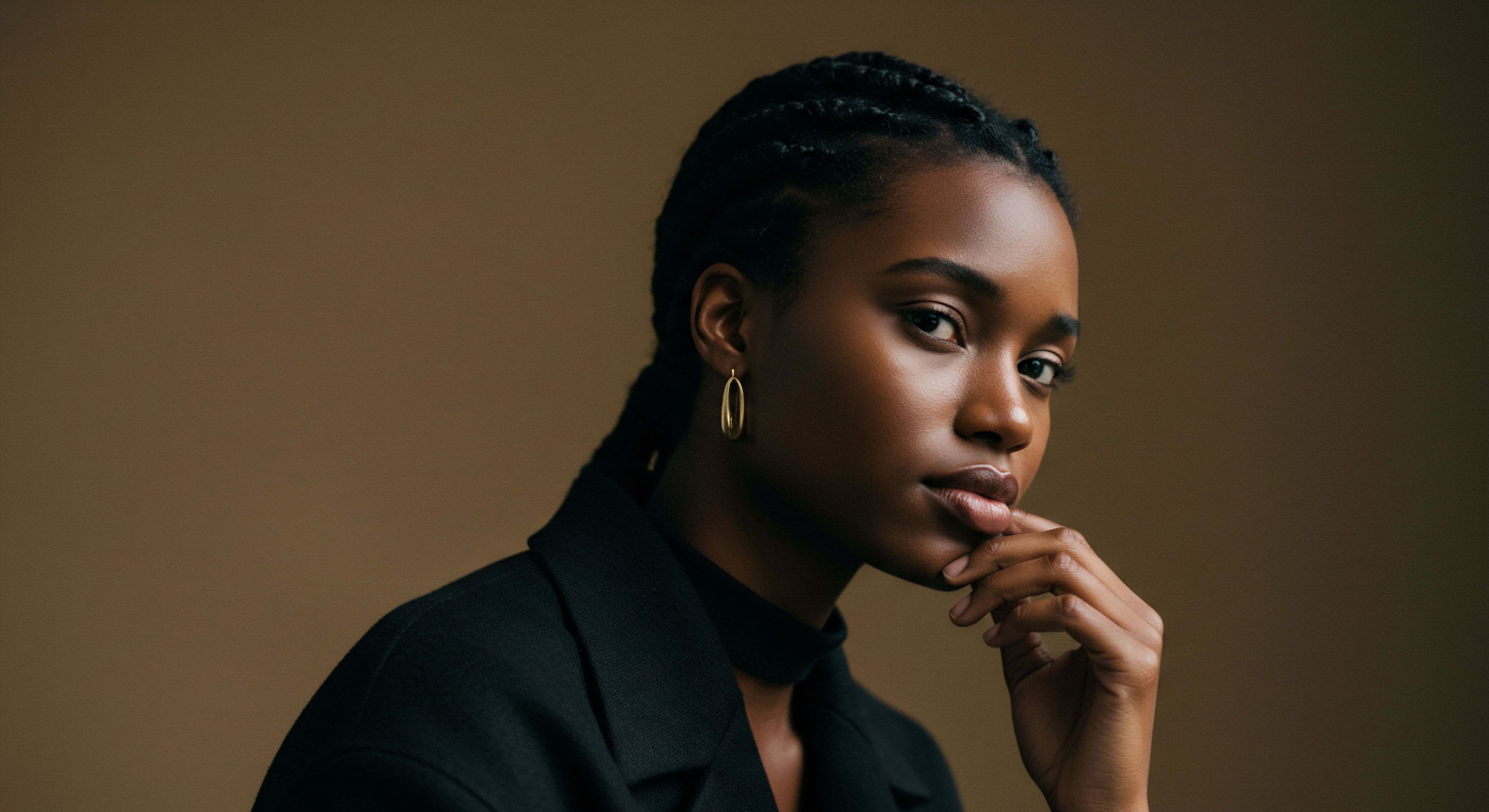
Cultural Legacies of Hair Care in Varying Climates
The interaction between hair and its environment is not solely a scientific matter; it is also deeply rooted in cultural practices and ancestral knowledge. For generations, communities with textured hair have developed intricate hair care rituals that respond intuitively to environmental challenges, including the effects of atmospheric conditions. These practices, passed down through families and communities, often contain profound wisdom about moisture retention and protection.
In many African and diasporic cultures, hair care has always been a communal activity, a time for sharing knowledge, techniques, and remedies. The historical context of textured hair, particularly its origins in hot, sunny climates, highlights its natural adaptations for insulation and moisture retention. However, the forced migrations and diverse climates encountered by the diaspora led to new challenges.
In colder, drier climates, traditional practices evolved to emphasize sealing and protective styles, acknowledging the hair’s vulnerability to moisture loss in harsh air. In humid environments, techniques focused on maintaining curl definition while preventing excessive frizz, often through the use of natural oils and specific braiding patterns.
These cultural legacies offer a powerful lens through which to understand modern hair care. They demonstrate an inherent understanding of how air, in its various forms, impacts hair health. From the use of specific plant-based oils for sealing to the adoption of elaborate protective styles that shield hair from dust and dry air, these traditions reflect centuries of observation and adaptation. They remind us that the quest for hair moisture is not a new endeavor but a continuous dialogue between our strands and the world around us, a dialogue enriched by the wisdom of those who came before.
Consider the widespread historical practice of oiling textured hair, common across many cultures. This practice, often done with coconut oil, shea butter, or various plant oils, served a crucial purpose beyond mere conditioning. These natural lipids act as a physical barrier, coating the hair shaft and providing a layer of defense against environmental elements.
In environments with high levels of dust or particulate matter, this oily coating would have helped to prevent direct adhesion of these particles to the hair’s surface, thus mitigating some of the drying and damaging effects. This traditional knowledge, honed over generations, instinctively addressed the very challenges we now dissect with scientific precision.
The practice of sleeping with hair covered, using wraps or bonnets, also has deep cultural roots and significant implications for moisture retention in varying air conditions. This ritual protects hair from friction against rough surfaces, which can lead to cuticle damage and moisture loss. Moreover, it creates a microclimate around the hair, helping to stabilize its moisture content overnight, regardless of the ambient humidity or dryness of the bedroom air. This simple, yet profound, act of care is a testament to an intuitive understanding of how environmental factors influence hair hydration.
Air particles chemically alter hair’s surface, making it more hydrophilic, which impacts moisture balance in textured strands.
The interconnectedness of hair health, environment, and cultural practice is further illuminated by the concept of Doshas in Ayurvedic tradition, where hair health is a reflection of overall well-being and influenced by the balance of energies like Vata (air and ether). An imbalance in Vata, for example, is associated with dry and frizzy hair, directly linking internal states to external hair conditions and indirectly to environmental air quality. This holistic perspective underscores that hair moisture is not an isolated phenomenon but a part of a larger ecosystem of body, mind, and environment.
- Pollutant Adhesion ❉ Particulate matter and other airborne substances physically stick to the hair surface, acting as a layer that can interfere with moisture absorption and release.
- Oxidative Damage ❉ Pollutants generate free radicals that attack hair proteins and lipids, compromising the cuticle’s integrity and increasing porosity, leading to moisture imbalance.
- Scalp Irritation ❉ Particles settling on the scalp can cause inflammation and dryness, which indirectly impacts the health of new hair growth and its ability to retain moisture.
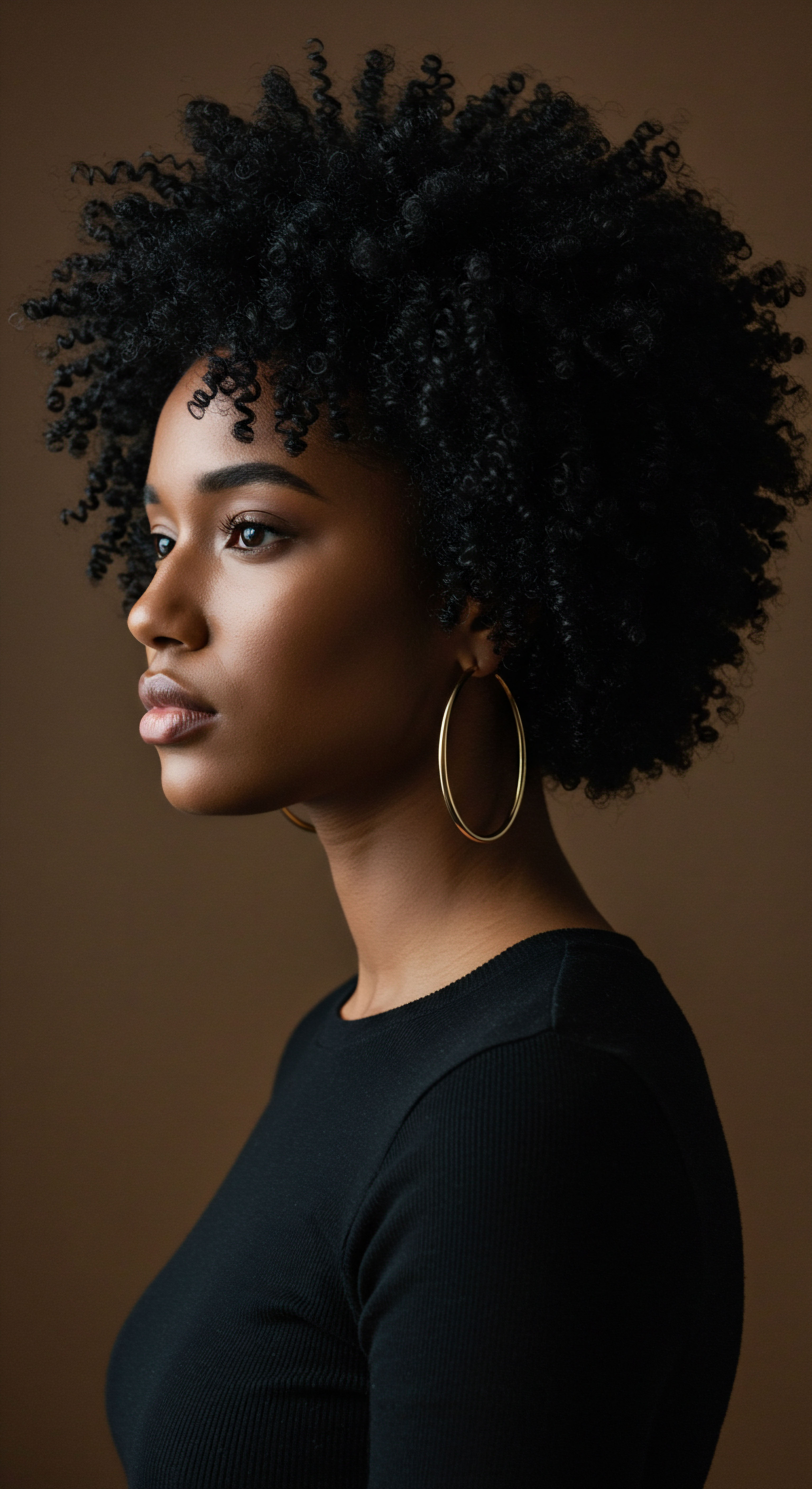
Reflection
As we close this exploration of how air particles shape the moisture of textured hair, a deeper appreciation for the delicate yet resilient nature of our strands emerges. It is a reminder that hair, far from being a static adornment, is a living canvas, constantly interacting with its environment, absorbing and releasing, adapting and responding. The air, with its invisible particulate dance, holds a profound influence over this process, inviting us to cultivate a more conscious and respectful relationship with our hair care. Each strand carries stories, not only of ancestry and identity but also of the very air it breathes, beckoning us to listen closely and respond with care.
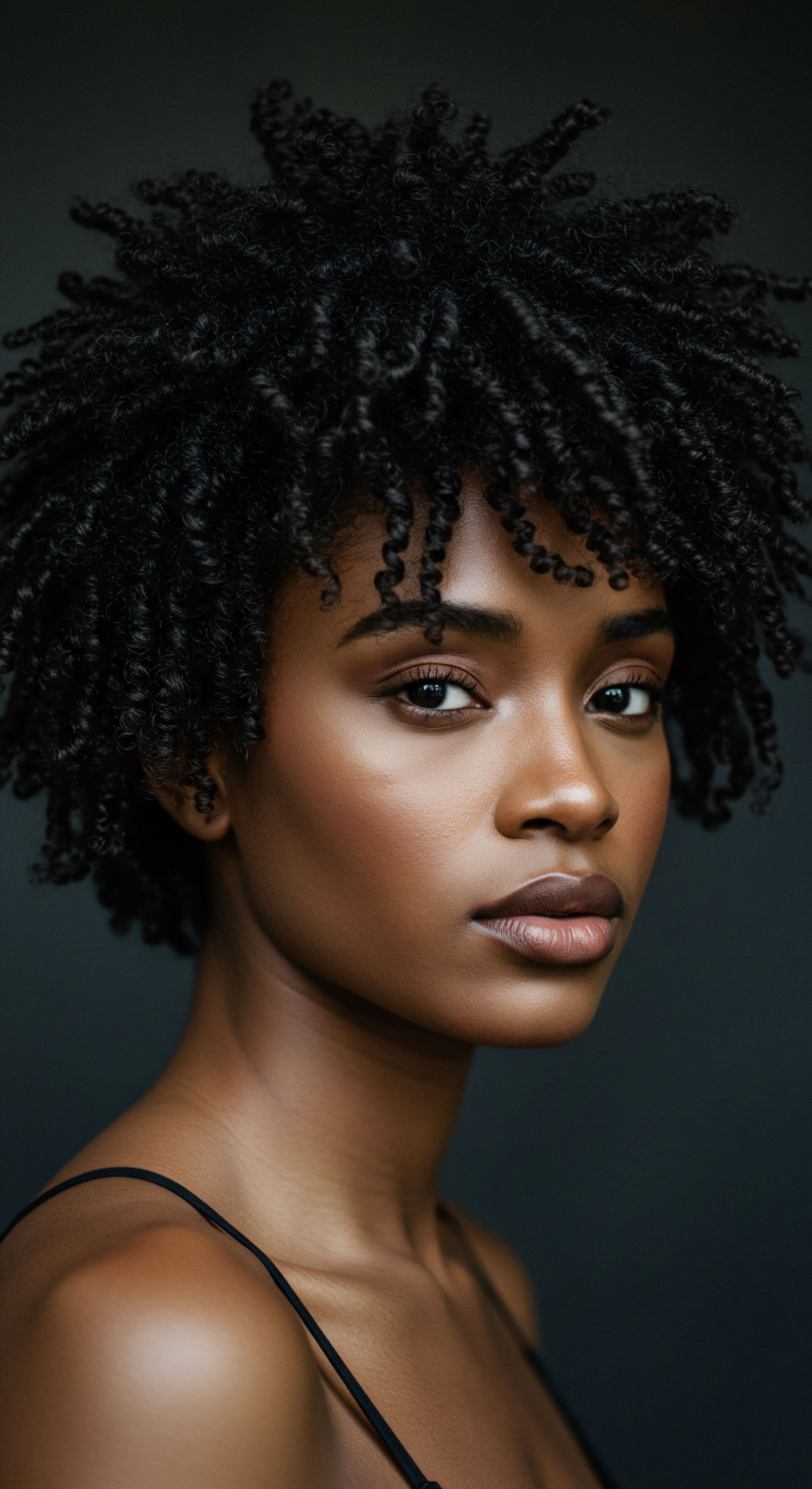
References
- Kwon, Hyuk Chul. (2024). “Is Pollution Ruining Your Hair? Learn About its Impact on Hair Health.” Trichology.
- NYSCC. (2021). “Impact of Environmental Stressors on Hair.”
- Monpure. (2023). “How Air Pollution Causes Hair Loss & How to Protect It.”
- Son, Eunhye, and Kwon, Ki Han. (2024). “The Invisible Threat to Hair and Scalp from Air Pollution.” Polish Journal of Environmental Studies.
- Function of Beauty Blog. (2021). “Hair Cuticle ❉ Understanding This Important Part of Your Hair.”
- Naturalis – life technologies. (Undated). “DAMAGED HAIR.”
- Monpure. (2022). “The Signs And Science Of Damaged Hair.”
- ResearchGate. (Undated). “Schematic representation of (a) structure of hair cuticle cell and (b). ” (Adapted from reference within the document).
- RichFeel. (2019). “Ask the Hair Expert ❉ How can I protect my hair from pollution?”
- Prose. (2021). “What Is a Hair Cuticle | Your Hair’s Protective Layer.”
- The Economic Times. (2021). “How to protect your hair and skin from pollution damage.”
- The Wonderful Cultural Significance Of Afro Hair Impact On Beauty Trends. (2023).
- Kim, H.J. et al. (2018). “Pollution Damage and Protection of Asian Hair.” MDPI.
- Trichology. (2024). “The Impact of Environmental Factors on Hair Health ❉ What You Need to Know.”
- The Impact of Climate Change on Hair Care Practices. (Undated).
- Sivakumaran, V. et al. (2024). “The Effects of Environmental Pollutants and Exposures on Hair Follicle Pathophysiology.”
- Rajput, R. (2016). “Understanding Hair Loss due to Air Pollution and the Approach to Management.” Hair Therapy & Transplant.
- Martine Langsam. (Undated). “Understanding Hair Loss due to Air Pollution and the Approach to Management.”
- Root Awakening’s Modern Take. (2024). “Textured Hair Care Through the Decades ❉ The 1940s – War, Work, and Waves.”
- Naturiam.ma. (2025). “The Science Behind Hair Porosity.”
- Natura. (2019). “Problems With Dirty Hair? Discover How Air Pollution Can Affect It!”
- OpticWeather. (Undated). “Weather Lifestyle Quirks ❉ How Weather Affects Daily Life and Habits.”
- Djamujamu. (Undated). “Eco-Friendly Hair Care Sustainable Products and Practices.”
- Sivakumaran, V. et al. (2025). “Detecting the Protective Power of a Hair Health Multi-peptide ❉ An Integrated Approach.”
- NYSCC. (2020). “An Overview on Hair Porosity.”
- ResearchGate. (2024). “Age-related hair denaturation related to protein carbonyls.”
- Cultivator. (2024). “The Effects of Pollution on Hair Health & How to Protect Your Hair.”
- The Institute of Trichologists. (Undated). “Chill out! How To Keep Your Hair Healthy This Winter.”
- Noma Sana. (2024). “The History of Straightening Afro and Textured Hair.”
- Rossano Ferretti Parma. (Undated). “Causes and prevention of humidity hair.”
- BosleyMD. (Undated). “4 Ways Air Pollution Affects your Hair Health.”
- Tira. (2023). “Ayurveda and haircare ❉ an expert take on traditional practices.”
- The Earth Collective. (2024). “The Ultimate Guide to Hair Care for Frizzy Hair in Humid Weather.”
- Naudin, G. et al. (2019). “Human pollution exposure correlates with accelerated ultrastructural degradation of hair fibers.” PLOS ONE.
- MDPI. (2019). “Protein Carbonylation as a Reliable Read-Out of Urban Pollution Damage/Protection of Hair Fibers.”
- Respiratory Therapy. (Undated). “Air Pollution Linked to Hair Loss.”
- MDPI. (Undated). “The Genomic Variation in Textured Hair ❉ Implications in Developing a Holistic Hair Care Routine.”
- TKS. (Undated). “Studies to understand the rates of moisture adsorption and desorption in hair.”